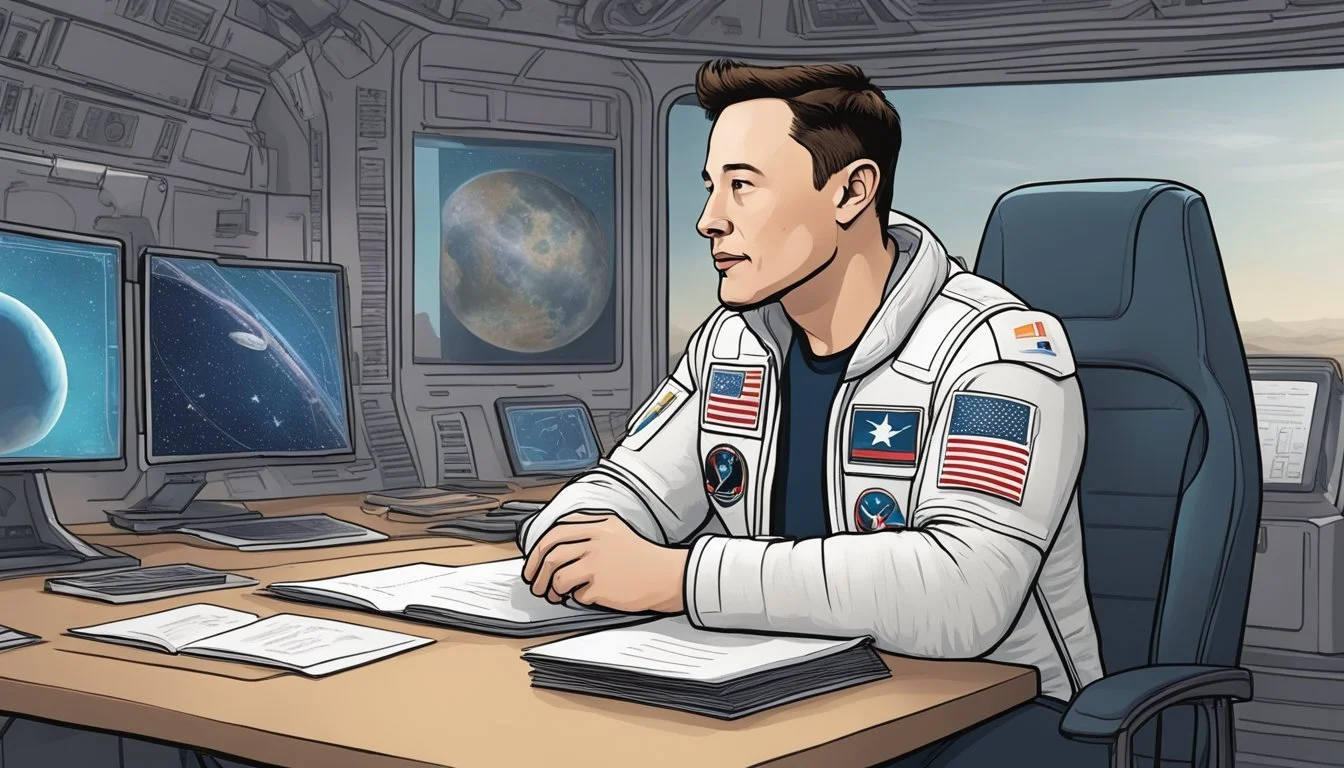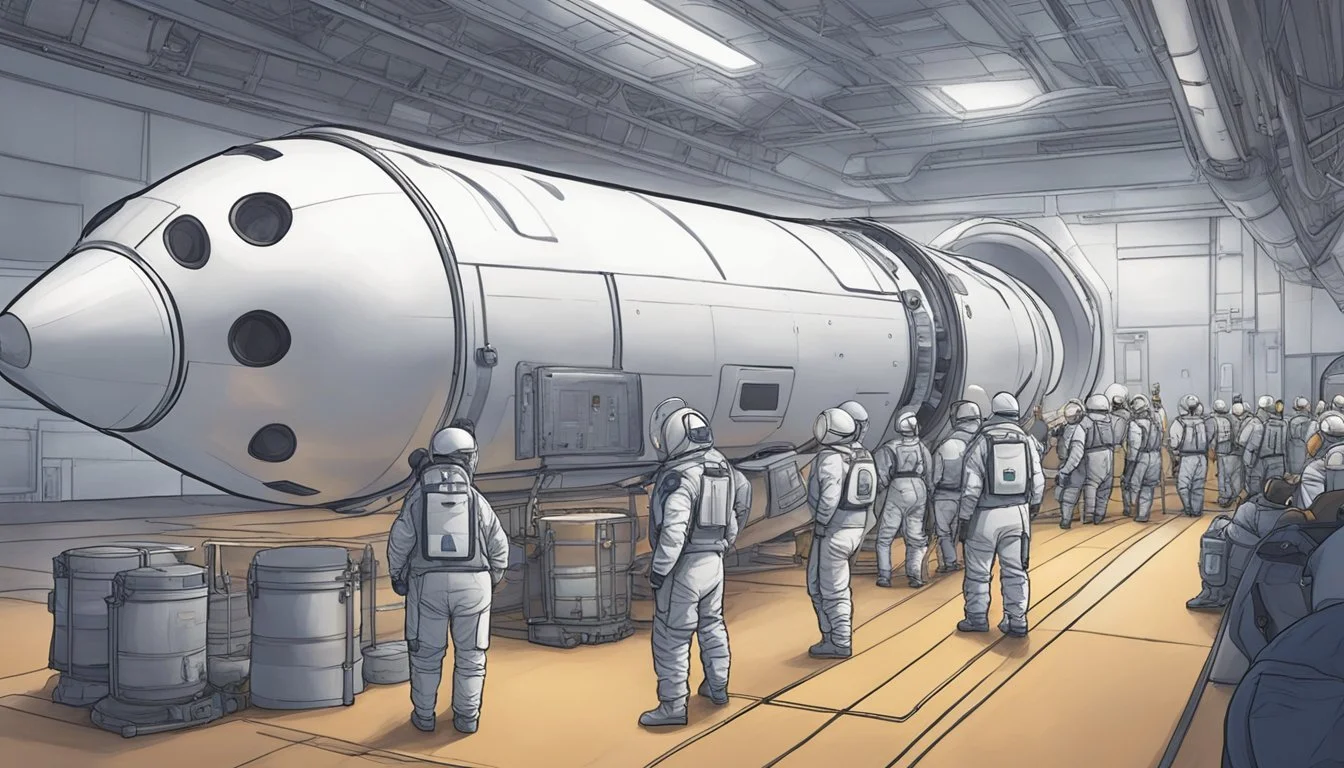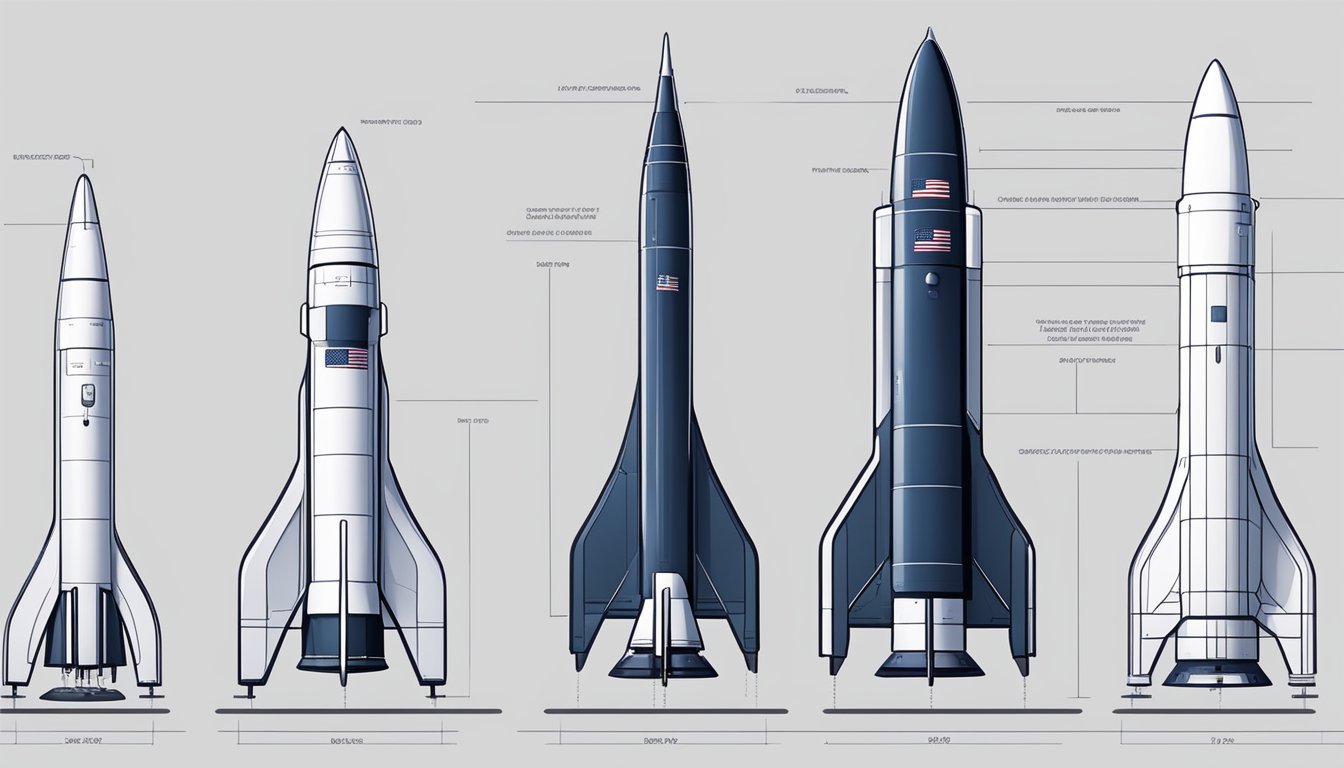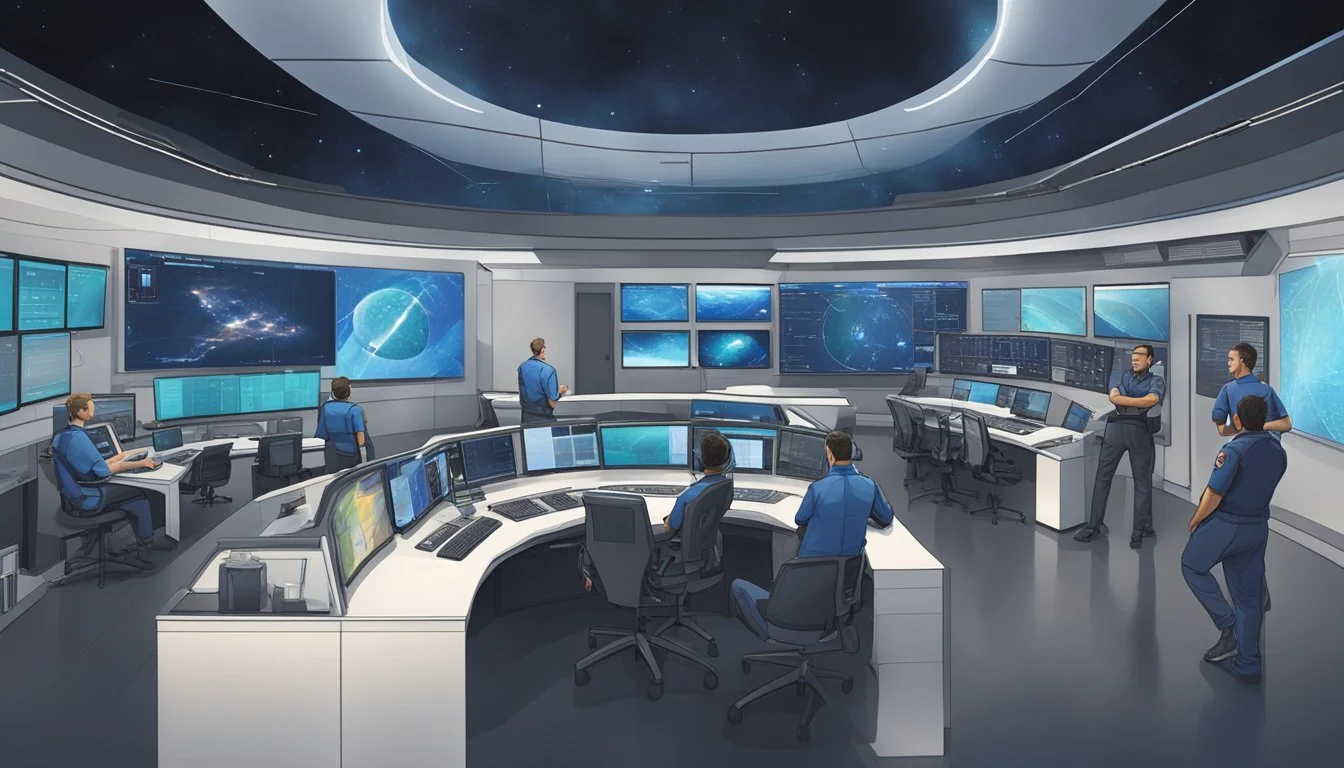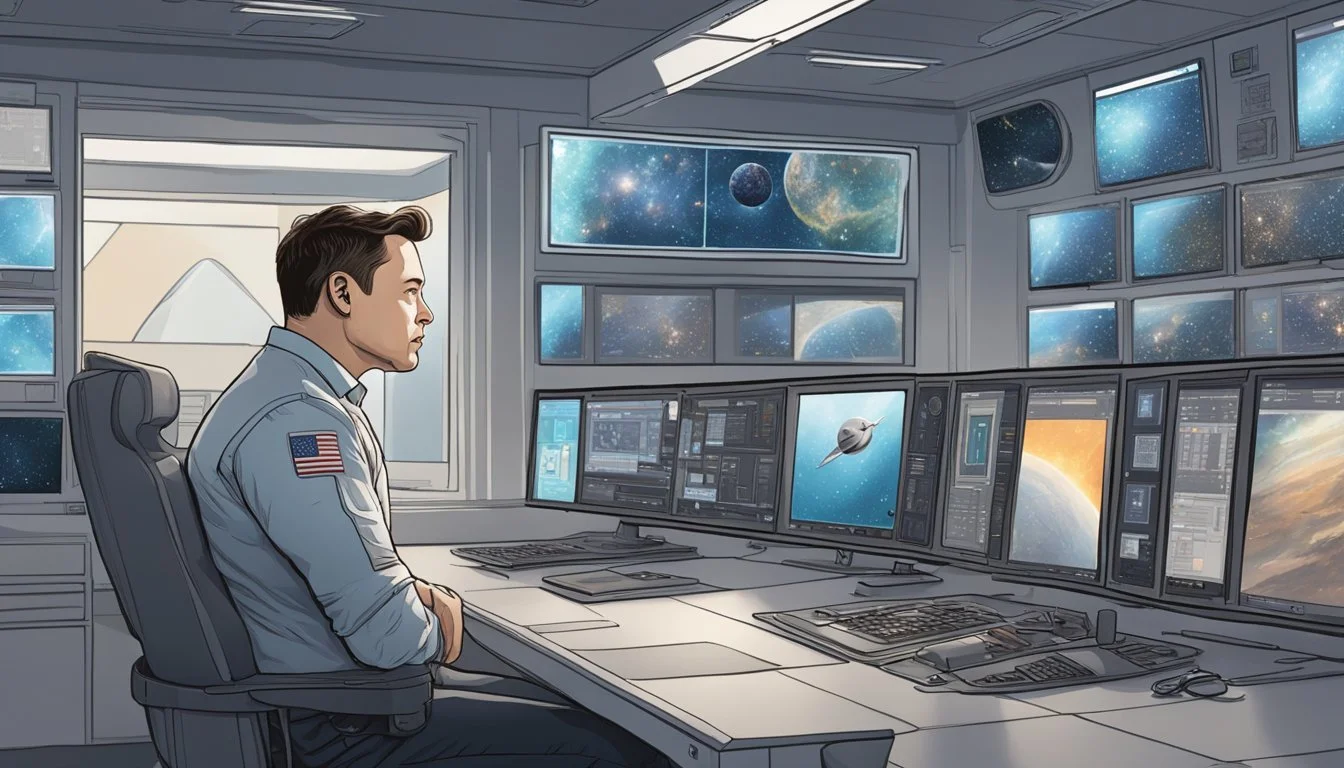Musk's Space Warriors: Billionaire's Secret Tests Breed Superhuman Astronaut Army!
SpaceX, led by visionary entrepreneur Elon Musk, has revolutionized space travel with its innovative approach to astronaut selection and mission design. The company's "Return to Space" initiative showcases a rigorous selection process that prioritizes both technical expertise and adaptability.
SpaceX's astronaut criteria emphasize a blend of scientific knowledge, physical fitness, and psychological resilience. Candidates undergo extensive training simulations, testing their ability to handle the challenges of long-duration space missions. This comprehensive approach ensures that only the most qualified individuals join SpaceX's elite corps of astronauts.
Elon Musk's influence on the selection process is evident in the emphasis on problem-solving skills and a pioneering spirit. SpaceX seeks individuals who can think creatively under pressure and contribute to the company's ambitious goals of interplanetary exploration. As SpaceX continues to push the boundaries of space technology, its carefully chosen astronauts play a crucial role in advancing human spaceflight capabilities.
The Vision of SpaceX and Elon Musk
SpaceX, founded by Elon Musk, aims to revolutionize space technology. The company's unofficial vision statement is "To advance the future," reflecting its ambitious goals.
Musk envisions making humanity a multi-planetary species. This includes establishing a self-sustaining city on Mars and enabling interplanetary travel.
SpaceX focuses on developing reusable rockets to reduce space travel costs. The Falcon 9 and Crew Dragon spacecraft are key components of this strategy.
The company participates in NASA's Commercial Crew Program, transporting astronauts to the International Space Station. This partnership demonstrates SpaceX's commitment to advancing space exploration.
Musk's leadership style emphasizes long-term thinking and innovation. He pushes for rapid development and testing of new technologies.
SpaceX's vision extends beyond Earth orbit. The company plans to use its Starship vehicle for missions to the Moon, Mars, and potentially beyond.
By reducing launch costs and increasing access to space, SpaceX aims to open new opportunities for scientific research and commercial ventures in space.
SpaceX's Selection Process for Astronauts
SpaceX employs rigorous criteria and comprehensive training to prepare astronauts for space missions. The company collaborates with NASA while developing its own unique selection methods.
Criteria for Selection
SpaceX prioritizes candidates with diverse backgrounds in science, engineering, and aviation. Military test pilots and individuals with advanced degrees in relevant fields are often preferred. Physical fitness plays a crucial role, with strict medical requirements ensuring astronauts can withstand the rigors of spaceflight.
Candidates must demonstrate exceptional problem-solving skills and the ability to work effectively in high-pressure environments. SpaceX values teamwork and communication skills, as astronauts must collaborate closely during missions.
Mental resilience is thoroughly evaluated, as extended periods in space can be psychologically challenging.
Training and Qualification
Selected candidates undergo intensive training at SpaceX facilities and NASA's Johnson Space Center. The program includes spacecraft systems familiarization, focusing on the Crew Dragon capsule.
Astronauts practice procedures in high-fidelity simulators, replicating various mission scenarios and potential emergencies. Spacewalk training occurs in NASA's Neutral Buoyancy Laboratory, preparing crew members for extravehicular activities.
SpaceX incorporates virtual reality technology to enhance training effectiveness. Crew members also receive instruction in Earth and space sciences, further expanding their knowledge base.
Medical training ensures astronauts can handle health issues in space. The qualification process culminates in mission-specific training, tailored to each crew's objectives.
Partnerships and Collaborations
SpaceX has forged strategic alliances with space agencies and private companies to advance its crewed spaceflight capabilities. These partnerships have enabled innovative missions and expanded access to space.
NASA and SpaceX's Synergy
SpaceX and NASA have developed a close working relationship through the Commercial Crew Program. This partnership has revitalized American human spaceflight capabilities. SpaceX's Crew Dragon spacecraft now regularly transports astronauts to and from the International Space Station (ISS).
The collaboration has proven cost-effective for NASA while accelerating SpaceX's technological development. NASA provides valuable expertise and facilities, while SpaceX offers innovative design and rapid iteration.
This synergy extends to future exploration goals. SpaceX's Starship vehicle is a contender for NASA's Artemis program, aiming to return humans to the Moon.
Working with International Space Agencies
SpaceX has expanded its collaborations beyond NASA to include other space agencies. The company works with the European Space Agency (ESA), Japan Aerospace Exploration Agency (JAXA), and Canadian Space Agency on ISS missions.
These partnerships involve crew transportation and cargo resupply services. International astronauts now fly aboard Crew Dragon alongside their American counterparts.
SpaceX has also discussed potential collaborations with Roscosmos, though geopolitical tensions have complicated these efforts. The company remains open to working with diverse international partners to advance space exploration and research.
Spacecraft Design and Technology
SpaceX's innovative spacecraft and rocket designs have revolutionized space travel. The company's focus on reusability and cutting-edge technology has led to significant advancements in both the Dragon spacecraft and Falcon 9 rocket.
Dragon Spacecraft Innovations
The Crew Dragon capsule represents a major leap forward in spacecraft design. It features a sleek, modern interior with touchscreen controls and comfortable seating for up to seven astronauts. The capsule's life support systems can sustain crew members for up to 210 days in orbit.
SpaceX equipped the Dragon with eight SuperDraco engines that serve as a launch escape system. These powerful thrusters can rapidly propel the capsule away from the rocket in case of an emergency during launch.
The spacecraft's heat shield uses PICA-X material, capable of withstanding temperatures up to 3,000°F during reentry. This advanced thermal protection system allows for safe returns from orbit and potential future missions beyond Earth orbit.
Advancements in the Falcon 9 Rocket
SpaceX's Falcon 9 rocket has undergone continuous improvements since its debut. The current Block 5 version boasts increased thrust, improved engine efficiency, and enhanced reusability features.
The rocket's first stage is designed for rapid refurbishment and reuse, with some boosters flying up to 10 missions. This reusability dramatically reduces launch costs and turnaround times between flights.
Falcon 9's Merlin engines use subcooled liquid oxygen and kerosene propellants for increased performance. The rocket's avionics and flight computers provide precise control during ascent and landing maneuvers.
SpaceX implemented a series of upgrades to address potential technical issues and enhance safety. These include improved turbopumps, reinforced landing legs, and optimized grid fins for better control during descent.
Historical Missions and Milestones
SpaceX has achieved numerous groundbreaking accomplishments in space exploration. The company's missions have ranged from cargo resupply flights to crewed missions, showcasing its rapid advancement in spacecraft technology and launch capabilities.
Notable Crewed Missions
SpaceX made history on May 30, 2020, with the launch of Demo-2, its first crewed mission to the International Space Station (ISS). This flight marked the return of human spaceflight launches from U.S. soil after a nine-year hiatus.
The successful Crew-1 mission followed in November 2020, transporting four astronauts to the ISS for a long-duration stay. Subsequent missions like Crew-2, Crew-3, and Crew-4 further solidified SpaceX's role in regular crewed flights to the station.
In September 2021, the Inspiration4 mission became the first all-civilian orbital flight, spending three days in space and raising funds for St. Jude Children's Research Hospital.
Significant Uncrewed Test Flights
SpaceX's journey to crewed missions involved crucial uncrewed test flights. The Crew Dragon Demo-1 mission in March 2019 successfully docked with the ISS, proving the spacecraft's capability for future crewed missions.
The company also conducted an in-flight abort test in January 2020, demonstrating the Crew Dragon's ability to safely separate from the Falcon 9 rocket in case of an emergency during launch.
These tests were vital in validating SpaceX's systems and paved the way for NASA certification of the Crew Dragon for human spaceflight.
Astronaut Profiles and Missions
SpaceX's astronaut selection process focuses on qualified individuals with diverse backgrounds and expertise. Recent crew assignments highlight NASA's ongoing collaboration with commercial space partners.
Crew-9 Astronauts
NASA astronaut Nick Hague and Russian cosmonaut Aleksandr Gorbunov are set to launch aboard SpaceX's Crew Dragon Freedom. This mission continues the international cooperation on the International Space Station (ISS).
Hague, an experienced spaceflight veteran, previously flew on Soyuz MS-10 and Soyuz MS-12. Gorbunov will be making his first journey to space, bringing fresh perspective to the crew.
The Crew-9 mission demonstrates SpaceX's reusability concept. Crew Dragon Freedom has already completed multiple flights, including Crew-4 and the private Axiom-2 mission.
Future Crew Selections
SpaceX and NASA are actively preparing for upcoming missions. Astronauts Jeanette Epps and Zena Cardman are among the candidates being considered for future flights.
Stephanie Wilson, one of NASA's most experienced female astronauts, remains a strong contender for upcoming missions. Her extensive spaceflight experience makes her a valuable asset for long-duration stays on the ISS.
Frank Rubio, who recently completed an extended mission on the ISS, may provide valuable insights for future crew selections. His experience with prolonged space exposure is crucial for planning future missions.
Ongoing Challenges and Developments
SpaceX continues to face technical hurdles and external factors as it develops its crew transport capabilities. The company works to address safety concerns while adapting to environmental challenges that can impact missions.
Addressing Technical and Safety Concerns
SpaceX has encountered several technical issues during Crew Dragon development. Helium leaks in the capsule's pressurization system required design modifications. The company implemented changes to prevent similar problems in future flights.
Safety remains a top priority. SpaceX enhanced the parachute system after anomalies were detected in early tests. The abort engines also underwent extensive testing to ensure reliability during potential emergencies.
Elon Musk emphasized that SpaceX's Starship project has not negatively impacted Crew Dragon operations for NASA. The company maintains dedicated teams for each program to uphold safety standards.
Environmental and External Factors
Weather poses significant challenges for space operations. Hurricane Milton forced an evacuation of launch facilities, delaying a planned Crew Dragon mission. SpaceX developed improved forecasting methods to better anticipate and mitigate weather-related risks.
Orbital debris in low-Earth orbit presents an ongoing concern. SpaceX implemented advanced collision avoidance systems for Crew Dragon to navigate this increasingly crowded region of space.
Regulatory changes and geopolitical events can impact launch schedules and crew selection. SpaceX works closely with NASA and international partners to adapt to evolving requirements and maintain mission readiness.
Scientific Contributions and Experiments
SpaceX missions have advanced scientific research in space through innovative experiments and technologies. These endeavors expand our understanding of life sciences, materials, and space environments while pushing the boundaries of human space exploration.
Life Sciences and Material Research
SpaceX cargo missions regularly deliver crucial scientific payloads to the International Space Station. These experiments focus on microgravity's effects on biological systems and material properties. Researchers study plant growth, protein crystal formation, and cellular behavior in space conditions.
NASA administrator Bill Nelson emphasized the importance of these studies for future long-duration missions. SpaceX's frequent launches allow for rapid iteration of experiments and quick return of samples to Earth-based labs.
Space Experiments Conducted Onboard
Crew Dragon capsules carry specialized equipment for in-orbit research. Astronauts conduct experiments in fluid dynamics, combustion science, and technology demonstrations. These studies have practical applications for improving life support systems and spacecraft design.
Low-Earth orbit provides a unique environment for testing new materials and manufacturing techniques. SpaceX missions have enabled 3D printing experiments and the production of ultra-pure optical fibers in microgravity.
Pensacola-based researchers have contributed to several SpaceX-delivered experiments, including studies on muscle atrophy and bone density loss in space.
Conclusion
SpaceX's astronaut selection process for the "Return to Space" mission reflects a rigorous approach to ensuring crew safety and mission success. The company carefully evaluates candidates based on technical expertise, physical fitness, and psychological readiness.
SpaceX's criteria align with NASA's Commercial Crew Program standards while incorporating innovative elements. This approach has proven effective in selecting highly qualified astronauts capable of handling the demands of long-duration spaceflight.
The selection process emphasizes teamwork and adaptability, crucial factors for crews living and working aboard the International Space Station. SpaceX's Crew Dragon spacecraft, including the Endurance capsule, provides a state-of-the-art vehicle for these missions.
Safety remains paramount in SpaceX's astronaut selection, addressing concerns raised after the Columbia disaster. The company's commitment to crew safety is evident in its thorough screening and training procedures.
As human spaceflight evolves, SpaceX's selection criteria may continue to adapt. The company's approach to choosing astronauts plays a vital role in advancing commercial space travel and supporting NASA's ongoing exploration efforts.

